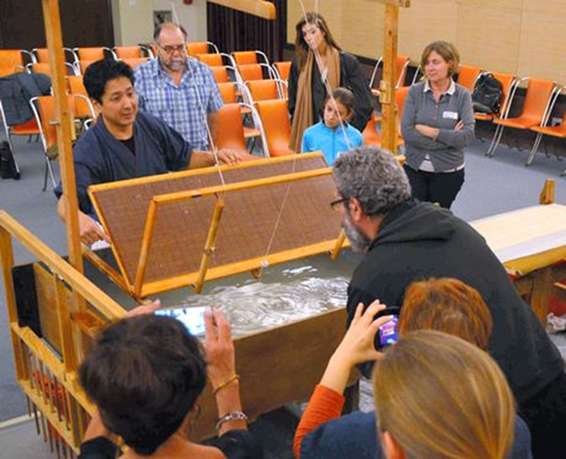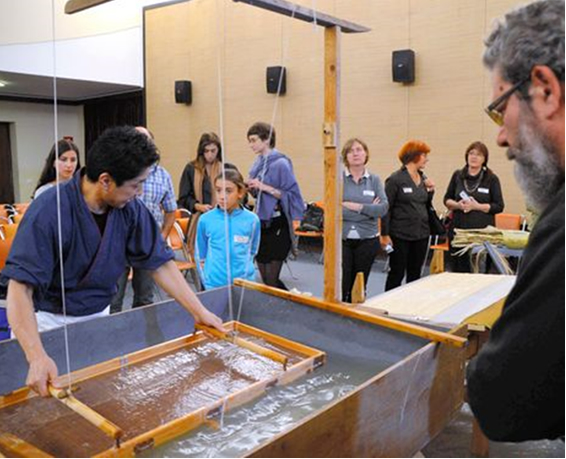Posted on The Asahi Shimbun on November 16, 2014
http://ajw.asahi.com/article/behind_news/social_affairs/AJ201411160018 Nobushige Akiyama shows the traditional way of making Japanese “washi” paper
Nobushige Akiyama shows the traditional way of making Japanese “washi” paper
at the Japan Cultural Institute in Rome on Nov. 13. (Hiroshi Ishida)
By HIROSHI ISHIDA/ Correspondent
ROME–In this soccer-mad country, a sellout crowd of 150 watched the methodical and precise moves of a Japanese artist creating “washi” paper in the traditional hand-produced way.
The 53-year-old artist, Nobushige Akiyama, performed five times on Nov. 13 at the Japan Cultural Institute in Rome.
Washi, which is expected to be added to UNESCO’s Intangible Cultural Heritage list, is gaining attention in Italy, where it is called “rice paper” and is indispensable for restoring cultural assets, such as ancient documents and drawings.
Akiyama, who was originally from Yokohama and has been living in Rome for 29 years, usually uses stones or bronze in his art. About 10 years ago, he started featuring the light but strong washi in his works.
“High evaluations of washi in foreign countries are unknown in Japan,” he said. “I want the Japanese people to rediscover its values.”
According to officials of the Istituto Superiore per la Conservazione ed il Restauro (Superior institute for conservation and restoration) in Italy, washi fibers are long and can withstand solvents. If solvents are transfused into thin washi and it is pasted on drawings, it can protect their surfaces.
By HIROSHI ISHIDA/ Correspondent  By hand, Nobushige Akiyama creates “washi” paper at the Japan Cultural Institute in Rome on Nov. 13. (Hiroshi Ishida)
By hand, Nobushige Akiyama creates “washi” paper at the Japan Cultural Institute in Rome on Nov. 13. (Hiroshi Ishida)
